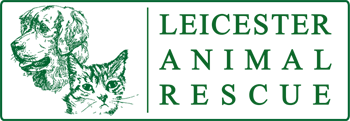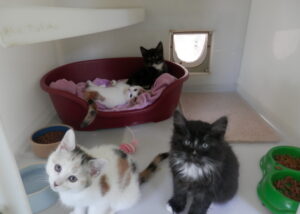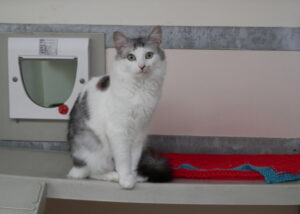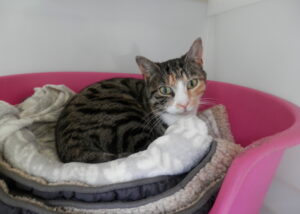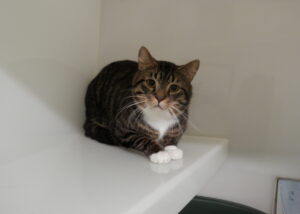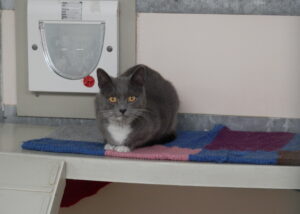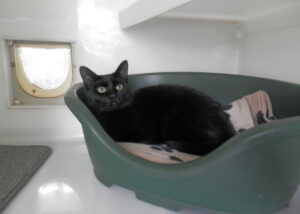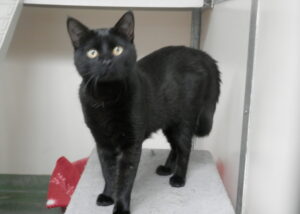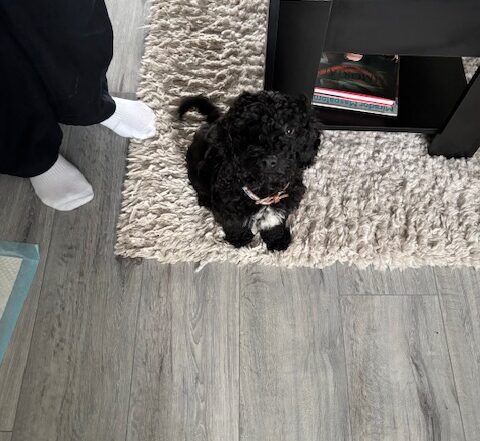Coping with Fireworks
Fun for us but not for our furry friends! Plan ahead to help them cope this fireworks season.
Bonfire night is a time of year many pet owners dread, particularly as the ‘fireworks season’ seems to get longer each year. Firework fears and noise phobias are a common problem for many pets.
Fear of fireworks in dogs can manifest itself in a range of behaviours from hiding away, to becoming restless, agitated and vocal, maybe even destroying household fixtures and fittings. Although a hiding dog is easier to live with, all types of reaction can be caused by the same degree of fear and so should be taken equally seriously.
It is common for fear of fireworks to develop into fear of all sorts of other noises as well, such as thunder or backfiring exhausts. Once the problem has generalized, it is even harder to deal with.
There are a number of things pet owners can do to help reduce the stress and anxiety caused by fireworks. All cats need to be kept inside after dark during firework season. There are many things you can do to minimise stress for your dog but you need to have planned how to cope well in advance, as certain strategies need to be in place at least 2 weeks before the fireworks start.
- Reduce exposure to the sights and sounds of fireworks. Close the curtains and have the TV or radio turned up. Walk your dog early before the fireworks begin.
- Create a ‘safe den’ to make your pet feel more secure. If your dog is used to using a crate then you could cover the crate with a blanket, or make a den under a table or out of a cardboard box for example. Leave toys and stuffed Kongs for dogs to chew – the action of chewing releases the brain chemical serotonin, a mood stabiliser, which will help to calm your dog.
- Act normal around your pet as cuddling them will reinforce the fear they are feeling. Instead try and engage your dog in a game with a toy.
- Try using a calming pheromone diffuser or collar such as Feliway for cats or Adaptil for dogs. The pheromones replicate those of the nursing mother cat/dog, making your pet feel less anxious. If you chose the plug-in diffuser it needs to be on 24 hours a day, and the collar needs to be worn at all times. It is important that the pheromone is installed about 2 weeks prior to the start of fireworks, otherwise clever pets will associate the appearance of a diffuser or collar with fireworks and become more anxious!
- Effective sedative tablets can be prescribed by your vet. The sedative is usually well tolerated but occasionally can cause side effects. These side effects are temporary and not dangerous but they mean an alternative medication should be used. For this reason, a tester dose needs to be given on a quiet day prior to firework time, when you are able to observe your dog for 3-4 hours, to ensure there are no problems. We therefore advise you to make an appointment with a vet, to have the sedative prescribed, well before you anticipate fireworks.
- Desensitisation CDs are available from pet shops or online. The CDs have recordings of firework noises and the aim here is to play the CD often in the background of everyday life so the pet becomes used to the sounds and less sensitive to the real sounds when they happen. The desensitisation process can take some time and needs commitment from you to make it work. You will need to start as far in advance of the fireworks starting as possible.
- Tellington TTouch is a method of bodywork where different touches are performed to reduce anxiety and promote feelings of well-being. TTouch can be used on any animal, for a variety of common issues and is really easy to learn. Leicester Animal Aid hosts TTouch courses every month.
- Thundershirts, Equafleece T-shirts and Body Wraps work on the principles of TTouch and provide a ‘portable hug’ to the dog making it feel more secure. It is a similar principle to swaddling babies. Ypu can learn about Body Wraps on the TTouch course and Equafleece Tshirts can be purchased from LAA. They should fit snugly like a pair of leggings.
If your dog is already very frightened of fireworks or has developed a generalised noise phobia, treatment is possible but requires a lot of time, patience and effort. Please ask your vet to refer you to a pet behaviourist.
Remember also to be vigilant in checking your garden for used fireworks. These can easily be mistaken for toys by your dog.
